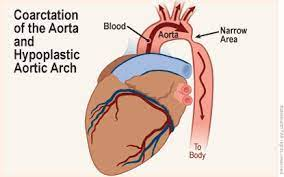A 10-year-old has undergone a cardiac catheterization. At the end of the procedure, the nurse should first assess
Pain
Pulses
Catheterization report
Hemoglobin and hematocrit levels
The Correct Answer is B
Assessing pulses is a critical step immediately after a cardiac catheterization procedure because it helps determine the adequacy of blood flow to the extremities and any potential vascular complications. Cardiac catheterization involves the insertion of a catheter through blood vessels, which can temporarily affect blood flow. Checking pulses in the affected limb (e.g., the leg or arm where the catheter was inserted) is essential to detect any signs of vascular compromises, such as decreased or absent pulses, which could indicate complications like arterial thrombosis or embolism. Prompt recognition of such issues is crucial for timely intervention to prevent potential complications or limb damage.
The other options are also important but should be addressed after the initial assessment of pulses:
A. Pain: Assessing pain is important, but it should come after checking pulses. If the child reports pain, it could indicate discomfort or complications related to the procedure, which may require further evaluation and intervention.
C. Catheterization report: Reviewing the catheterization report is necessary for a comprehensive understanding of the procedure and its findings, but it is not the immediate priority when assessing the child's post-procedure condition.
D. Hemoglobin and hematocrit levels: Checking hemoglobin and hematocrit levels is important to monitor for potential bleeding complications that may occur during or after the procedure, but it is a secondary assessment compared to evaluating pulses. If there are significant changes in these levels, they may require further investigation and intervention.
In summary, assessing pulses is the initial priority after a cardiac catheterization procedure in order to promptly identify any vascular issues or complications that need immediate attention.
Nursing Test Bank
Naxlex Comprehensive Predictor Exams
Related Questions
Correct Answer is ["A","C"]
Explanation
For a family with a child diagnosed with obesity and hyperlipidemia, the recommended actions in the educational pamphlet should focus on promoting a healthy lifestyle and managing these conditions effectively. The most appropriate recommendations are:
A. Children-specific heart-healthy diet: Emphasize the importance of a balanced and heart-healthy diet for the child. Include information on portion control, reducing high-fat and high-sugar foods, increasing fruit and vegetable intake, and incorporating whole grains. Encourage families to work with a registered dietitian or nutritionist for personalized dietary guidance.
C. Nutrition guidance from a pediatric specialist: Recommend seeking guidance from a pediatrician or pediatric specialist with expertise in nutrition to develop a personalized nutrition plan for the child. Individualized guidance can help address specific dietary needs and concerns related to obesity and hyperlipidemia.
In contrast, the following options should not be included:
B. Start on statin medication first: Statin medications are typically not the first-line treatment for children with hyperlipidemia, especially if lifestyle modifications can effectively manage the condition. Medication use in children is typically reserved for cases where lifestyle changes alone are insufficient or when there are other medical considerations.
D. Encourage more than 4 hours of screen time per day: Encouraging excessive screen time is not recommended, as it can contribute to a sedentary lifestyle, which is often associated with obesity. Limiting screen time and promoting physical activity are important components of managing obesity.
E. Exercise for at least 3 hours daily: While physical activity is important for managing obesity, recommending over 3 hours of exercise daily may not be realistic or sustainable for most children. Instead, it's better to encourage regular physical activity, such as at least 60 minutes of moderate to vigorous activity daily, as recommended by guidelines for children.
Overall, the focus should be on adopting a healthy lifestyle, including a balanced diet and appropriate physical activity, under the guidance of healthcare professionals, to manage obesity and hyperlipidemia in children.
Correct Answer is B
Explanation
Coarctation of the aorta is a congenital heart defect where the aorta, the major blood vessel that carries oxygenated blood from the heart to the body, is narrowed. As a result, blood pressure tends to be higher in the arms and upper body but lower in the lower body, including the legs. This condition can lead to symptoms such as dizziness, headaches, and even nosebleeds due to high blood pressure. Weak or absent lower extremity pulses, as well as pale and cool legs, are characteristic physical findings in coarctation of the aorta.
A. Tetralogy of Fallot: This is a different congenital heart defect characterized by a combination of four specific heart defects, including ventricular septal defect, right ventricular hypertrophy, pulmonary stenosis, and an overriding aorta. It typically does not cause the symptoms described in the scenario.
C. Pulmonic Stenosis: This condition involves the narrowing of the pulmonary valve or artery, leading to restricted blood flow from the right ventricle to the pulmonary artery. While it can cause various symptoms, it typically doesn't cause the specific blood pressure discrepancies described.
D. Tricuspid Atresia: This is a congenital heart defect where the tricuspid valve is absent or abnormally developed. It leads to the mixing of oxygenated and deoxygenated blood in the heart. While it can cause cyanosis (bluish skin due to low oxygen levels), it doesn't typically cause the specific blood pressure findings mentioned.

Whether you are a student looking to ace your exams or a practicing nurse seeking to enhance your expertise , our nursing education contents will empower you with the confidence and competence to make a difference in the lives of patients and become a respected leader in the healthcare field.
Visit Naxlex, invest in your future and unlock endless possibilities with our unparalleled nursing education contents today
Report Wrong Answer on the Current Question
Do you disagree with the answer? If yes, what is your expected answer? Explain.
Kindly be descriptive with the issue you are facing.
